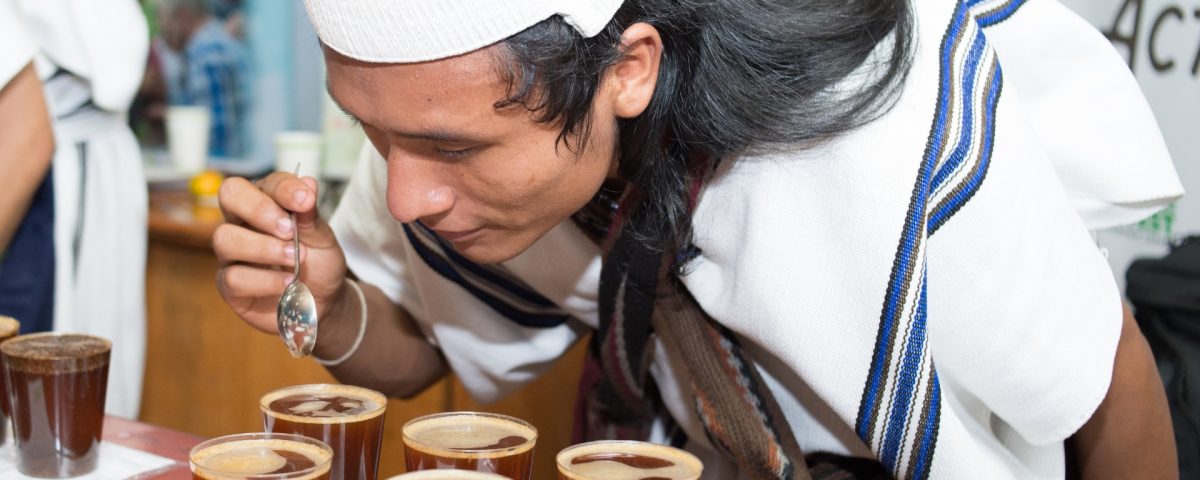
Guia basica de catación
June 29, 2021
Arabica and Robusta
June 30, 2021Basic cupping guide


Tasting is a widely used and quantifiable analytical method to evaluate a coffee sample, from its overall quality to individual characteristics and specific flavor notes.
Coffee is evaluated and qualified using a universal standardized tasting method known as cupping. For green coffee buyers, tasting is essential in deciding which coffees to buy and their characteristics to present to customers. For roasters, cupping helps them define a roast profile to ensure that the development of the coffee’s attributes is appropriate. For quality control specialists, this means making sure that every coffee that comes out of the roaster and sent to coffee shops for marketing tastes great with no potential flaws or outlandish flavors.
 Calidad del café
Calidad del café
At Anei we know the relevance of cupping and that is why we want to share some of the main aspects that must be taken into account in the coffee cupping process.
1. The supplies you need
Coffee: You need a sample of coffee that you want to taste. The official cupping ratio (2) suggested by the Specialty Coffee Association is 8.25 grams per 150 ml of water. It is essential to use freshly roasted coffee beans or those that do not exceed two weeks of roasting. We also recommend using different coffee samples to achieve comparison of attributes and characteristics.
Coffee grinders: The strength of the grind is essential for tasting. Currently, you can find small mills perfect for small samples in coffee shops or online marketplaces, you can also find manual mills. It is necessary to use a medium-coarse ground coffee, the one used when it is used to prepare a Chemex.
Water: the quality and quantity of water used are essential for the cupping process, it is recommended to use filters or drinking water in case the water has some type of residue or does not have a treatment.
Cups for your coffee: Choose four or three cups equivalent to the coffee samples for the cupping
Spoons: You don’t need a special spoon, you can use the ones you have available at home. In the case of a specialized tasting, you can find special cupping spoons.
Notepad: to make a comparison of the samples and their attributes, it is essential to take note of the important variables and data.
Timer / Stopwatch: you can use your phone’s timer or any timer with seconds.




Anterior
Siguiente
2. Preparation of cupping
Put a bowl on the table for each coffee you are going to drink. Label each bowl with the origin, then start heating the water (approx 150 ml of water per coffee). While the water is heating, start the coffee grinding process, create stacks of 4 g of coffee to clean the grinder. then take a sample of 8.25 grams of each coffee to obtain a medium-coarse grind.
3. Tasting process
We will start with the evaluation of the fragrance, you must first inhale and take a gentle but firm aspiration of each coffee sample, breathing through your mouth and nose. Come closer and close your eyes to concentrate and perceive its aroma. In your notes add any aroma association related to fruit, plant, or memory.
Then add 150 grams of water (⅔ of a cup) to the coffee cups.
Repeat the fragrance evaluation process, taking into account changes and perceived aromas.
Three to four minutes after the water has been added, the top of the bowl develops a thick layer on the cup, called a “crust.”, with a spoon, separate the bark from each sample and repeat the fragrance evaluation process, just after removing the bark from the surface.
Finally, after about 14 minutes and you take a tablespoon of each coffee sample, sip carefully making sure to taste the coffee on the palate. Hold the coffee sample in your mouth for a moment, savoring it, then spit it out.
Take note of each perceived flavor, if you need a base of characteristics and attributes, you can use the coffee cupping flavor wheel.
Review your notes and notes, compare its characteristics and aromas, evaluate its flavor.
Previous
Next



